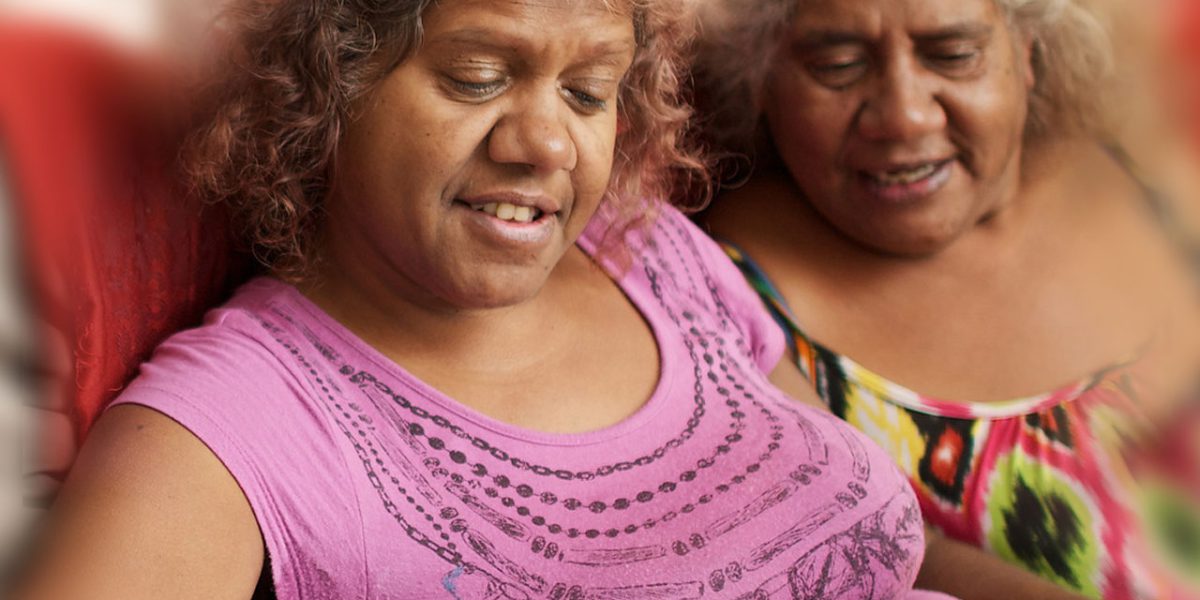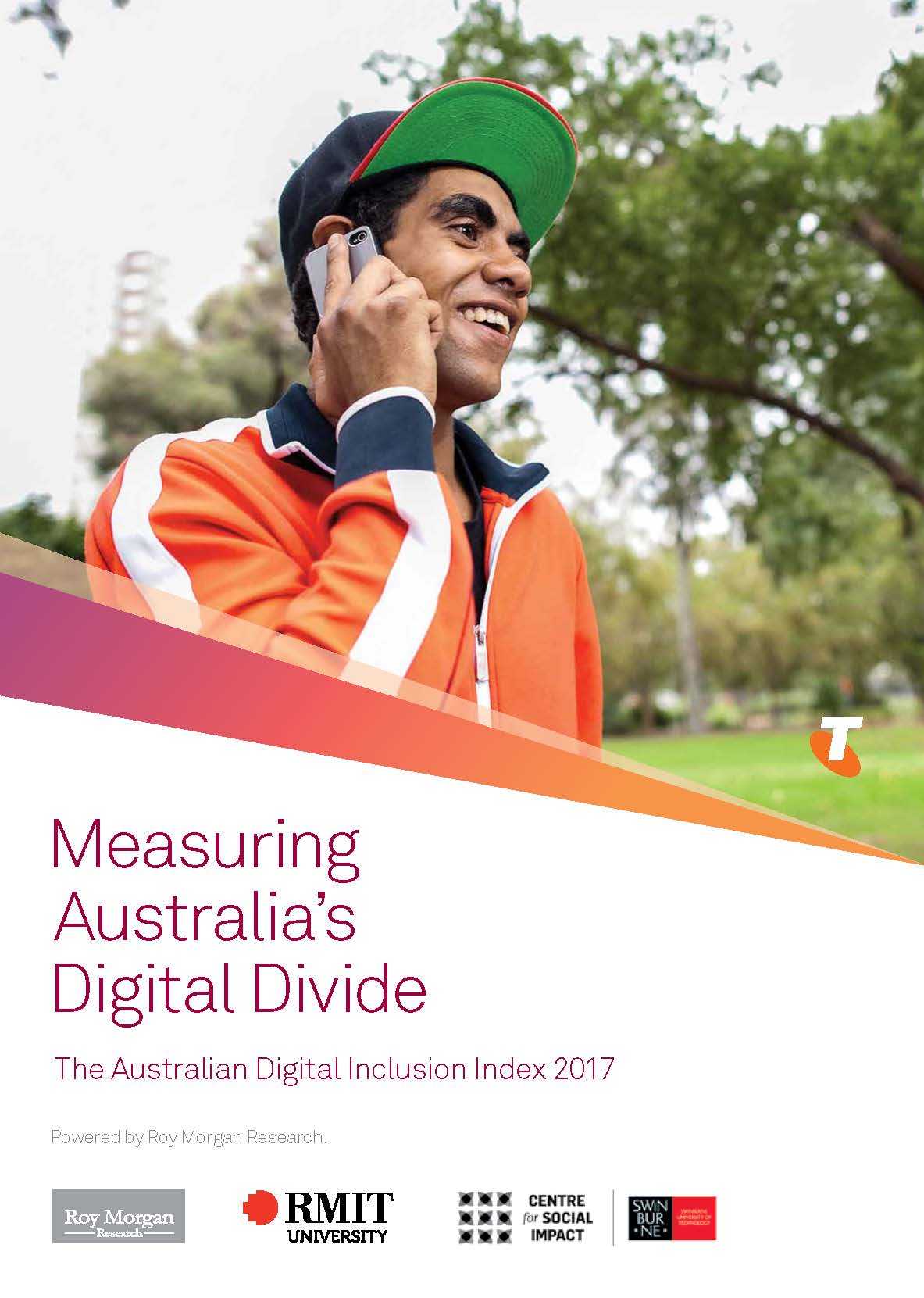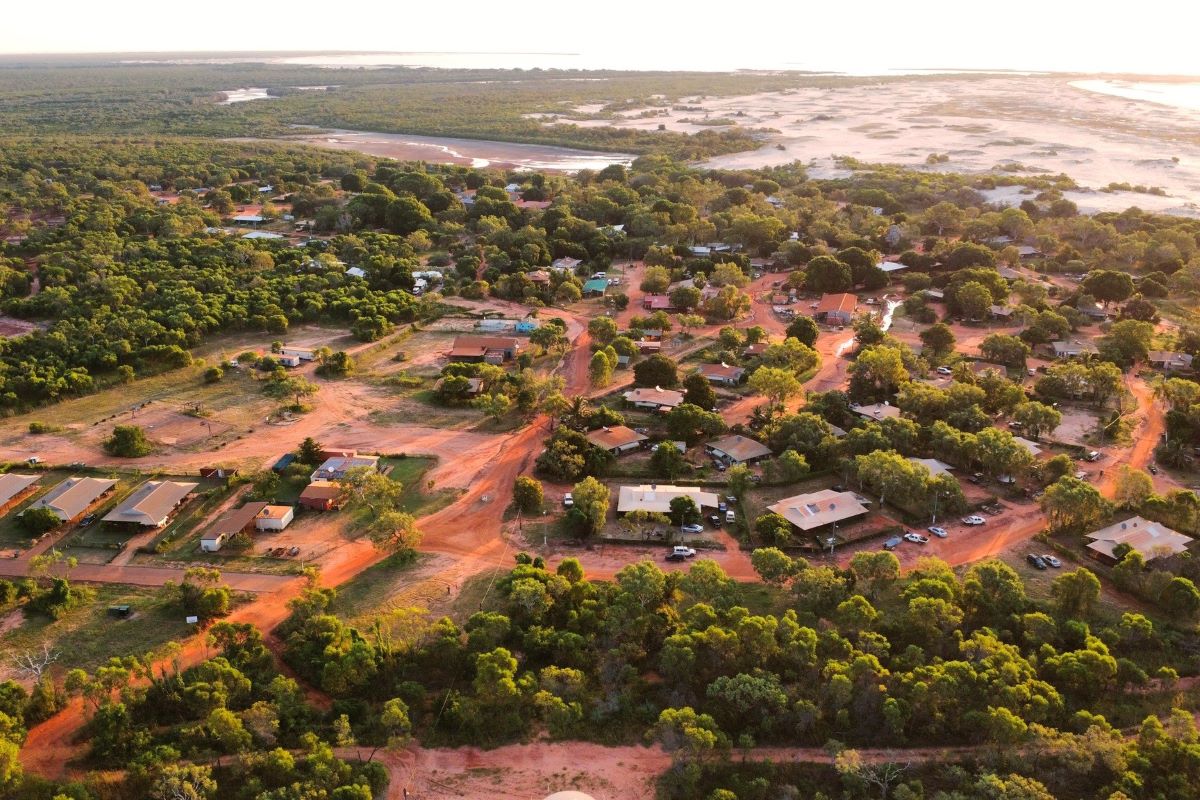This case study was originally published in the 2017 Australian Digital Inclusion Index report, and is derived from the Roy Morgan Single Source dataset. As of 2021, the Australian Digital Inclusion Index is based on the Australian Internet Usage Survey (AIUS). The numerical results of this case study cannot be compared with the refreshed ADII data.
The ADII yields important insights into the digital inclusion of Indigenous Australians living in urban and regional areas. While the ADII does not include data for those living in remote areas, the data at national level can be treated with more confidence.1
The key finding is that while Indigenous Australians have lower ADII scores than the overall population, the gap has narrowed over the past three years (from 9.2 in 2015 to 7.0 in 2017). Access and Ability have significantly improved2, while Affordability has improved slightly.3 At first glance, the ADII data reflects rising levels of digital inclusion for Indigenous Australians in non-remote areas. However, as outlined below, there are important distinctions in how Indigenous Australians access the internet and aspects of digital exclusion may persist for this group even as technology adoption increases.
The low ADII score for Indigenous Australians cannot be explained by low socioeconomic status (SES) alone. While the average household income of Indigenous Australians is lower than that of the general population, when we compare low-SES Indigenous people with the total low-SES population, Indigenous Australians still score lower across all three sub-indices.
ADII data shows that Indigenous Australians are much more likely to be mobile-only users (49% of those surveyed) compared with the total population (21.3%). Mobile-only use is likely to affect the Affordability score.4 While Indigenous Australians’ Relative Expenditure does not differ greatly from the wider population (1.3 points lower), they get significantly less value out of that expenditure (12.7 points lower) because mobile data costs more than fixed line data.
Mobile-only users also tend to have lower Digital Ability, which may explain why Indigenous Australians score lower than average on Basic Skills (11.9 lower) and Activities (7.5 lower). In particular, they are far less likely to use the internet for transactions and shopping. The one area where Indigenous Australians score relatively highly is on Attitudes to digital technologies. They tend to see technology as giving them greater control over their life; they’re interested in being able to access the internet wherever they are; and they go out of their way to learn new things. Therefore, while Indigenous Australians are disadvantaged across multiple dimensions of the ADII, they are more likely than the general population to see digital technologies as a pathway to a better future.
Since the ADII does not survey remote Indigenous communities, it is likely that the ADII numbers are skewed upwards. Other surveys show that those living in remote areas are less likely to have an internet connection. For instance, the ABS’ National Aboriginal and Torres Strait Islander Social Survey (NATSISS) shows that while 85.7% of Aboriginal people living in urban and regional areas have accessed the internet in the last 12 months, only 53.1% of those living in remote and very remote areas have done so. For daily use, this drops to 64.1% and 25.2% respectively. However, the NATSISS does not tell us which devices people are using to access the internet. These data gaps make it difficult to provide a full picture of digital inclusion for this group.5
The ADII nonetheless provides some useful insights. It suggests that digital inclusion programs specifically for Indigenous Australians may be beneficial as their digital choices are different from other groups. Moreover, the fact that Indigenous Australians have a positive attitude to technology suggests these programs may have a high rate of success.
Further information
For more information, including related data tables and the full citation list, please refer to the 2017 Australian Digital Inclusion Index.
References and footnotes
[1] For example, the ADII and the National Aboriginal and Torres Strait Islander Social Survey (NATSISS) have produced similar results on the question of daily internet use for Indigenous Australians in non-remote areas. There is a 3.5 percentage-point difference in daily internet use for Indigenous Australians (Aboriginal and Torres Strait Island people) in the 2015 ADII data and the non-remote sample in the NATSISS (2014–2015). This is the only question contained in both datasets. While the 2016 Census contains questions on internet use, remoteness areas were not available at the time of writing. Australian Bureau of Statistics (2017). National Aboriginal and Torres Strait Islander Social Survey, Australia (2014–15). Catalogue number 4714.0, Canberra.
[2] A 9.2 rise since 2015 for Access among Indigenous Australians, compared with 6.1 for all Australians; and a 5.7 rise since 2015 among Indigenous Australians for Digital Ability compared with 2.7 for all Australians.
[3] A rise of 1.2 since 2015 for Indigenous Australians, compared with 0.7 for all Australians
[4] Research on Aboriginal people living in remote communities shows they overwhelmingly prefer pre-paid to post-paid billing – both for convenience, and because it fits better with cultural and social systems of exchange. However, the reasons for mobile-only use may be different for those living in urban and regional areas and more research is needed to better understand these differences. See Rennie E., Hogan, E., Gregory, R., Crouch, A., Wright, A. and Thomas, J. (2016). Internet on the Outstation: The digital divide and remote Aboriginal communities. Institute for Network Cultures: Amsterdam.
[5] For instance, the ABS’ National Aboriginal and Torres Strait Islander Social Survey (NATSISS) shows that while 85.7% of Aboriginal people living in urban and regional areas have accessed the internet in the last 12 months, only 53.1% of those living in remote and very remote areas have done so. For daily use, this drops to 64.1% and 25.2% respectively. However, the NATSISS does not tell us which devices people are using to access the internet. These data gaps make it difficult to provide a full picture of digital inclusion for this group. Australian Bureau of Statistics (2017). National Aboriginal and Torres Strait Islander Social Survey, Australia (2014–15). Catalogue number 4714.0, Canberra.
Citation
Thomas, J, Barraket, J, Wilson, C, Ewing, S, MacDonald, T, Tucker, J & Rennie, E, 2017, Measuring Australia’s Digital Divide: The Australian Digital Inclusion Index 2017, RMIT University, Melbourne, for Telstra. DOI: www.dx.doi.org/10.4225/50/







